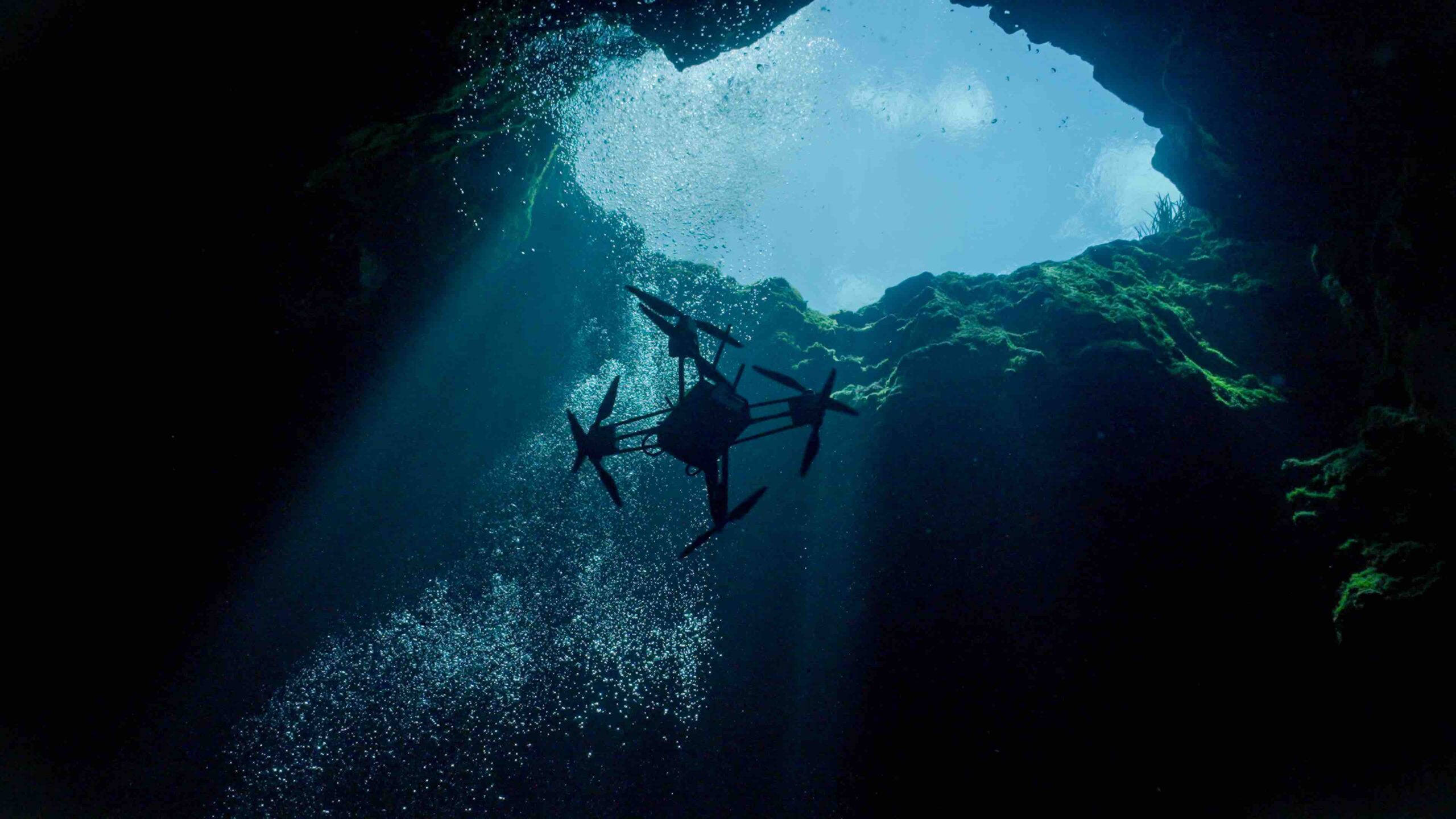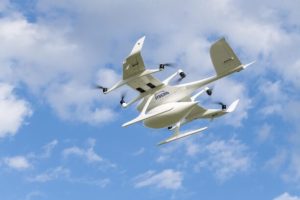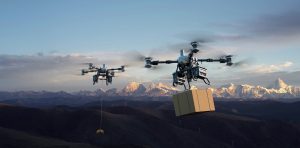Air Meets Sea: How the Naviator Drone Blurs the Boundaries Between Sky and Ocean
Imagine a singular vehicle capable of soaring above the waves and then diving beneath them with ease, speed, and full autonomy. This is not the latest James Bond gadget nor a video game feature. Introducing the Naviator: the world’s first truly hybrid drone, adept at functioning effectively both in the sky and underwater. This concept is no longer a part of science fiction but a transformative reality reshaping industries today.
The Dawn of Dual-Domain Drones
For years, unmanned systems have either navigated the skies or explored beneath the waters, never both effectively. The transition between air and water has posed a significant technical challenge. The Naviator, however, breaks down this barrier, making what was once unthinkable routine. Developed at Rutgers University and commercialized by SubUAS LLC, this octa-quadcopter forges a new path in robotics where autonomy unites domains instead of separating them.
How Does the Naviator Work?
The true marvel of the Naviator lies in its capability to transition between air and water in just under two seconds, achieved through years of research and sophisticated engineering. Its propulsion system, inspired by nature and advancements in aerospace like NASA’s Mars Ingenuity Helicopter, provides meticulous control in vastly different environments—considering air and water have a density difference of nearly a thousandfold!
- Hybrid Propulsion: A singular propulsion system that efficiently operates in both realms without compromising.
- Sleek Electronics: Instead of using heavy pressure vessels to shield electronics underwater, the Naviator employs unique coatings, enabling it to dive up to 2,000 feet while remaining agile.
- Autonomous Navigation: While GPS and remote control manage aerial movements, underwater operations switch to visual localization and advanced autonomy, overcoming a major robotics challenge.
- Hybrid Control Systems: The dynamics of the vehicle are modeled as a hybrid system, where seamless transitions are managed by advanced controllers accommodating abrupt changes in buoyancy and drag.
Real-World Breakthroughs and Industry Firsts
The Naviator is beyond just a prototype; it’s operational. One of its landmark achievements includes the first aerial and underwater bridge inspection for the Delaware Memorial Bridge, accomplished by a single autonomous unit. Tasks that formerly demanded helicopters, boats, and divers are now completed in one synchronized mission, significantly reducing time, cost, and risk.
“The ability to have a single autonomous vehicle inspect piers or vessels both above and below the water line is no longer science fiction.” — Thomas J. Cook, Executive Director, DRBA
- Rapid Domain Transition: Seamless moves from water to air and back again, executed in less than two seconds, repeatedly and reliably.
- Mission Efficiency: Drastically reduced deployment times and risks while inspecting critical infrastructure, offshore platforms, and more.
- Autonomous Launch & Recovery: Capable of deploying multiple drones from compact maritime bases, suitable for offshore activities and remote sites.
Commercial and Strategic Impact
Both industry and government are interested in the Naviator:
- Over $36 million in contracts from the U.S. Department of Defense and numerous live demonstrations highlight its operational potential.
- The Naviator’s pioneering design earned it the 2025 Innovation Vanguard Award at XPONENTIAL, a prominent honor in the unmanned systems industry.
- From inspections of offshore oil and gas infrastructures to wind farm maintenance and environmental monitoring, the Naviator continuously sets new standards for safety and efficiency.
The Competitive Edge: Why Hybrid Autonomy Changes Everything
Multi-medium vehicles like the Naviator are more than impressive technology— they are strategic force enhancers.
| Traditional Approach | The Naviator Approach |
|---|---|
| Separate vehicles for air and water missions | One vehicle, seamless air-water transitions |
| Slow, risky, manpower-intensive (boats, helicopters, divers) | Fast, autonomous, single-deployment |
| Expensive, cumbersome logistics | Compact, mobile, easily deployed |
| Limited to isolated tasks | Multi-phase missions in a single sortie |
“This is more than a drone—it’s a new class of autonomous system.” — Dr. F. Javier Diez, CEO, SubUAS LLC
Applications: From Bridge Inspections to Search-and-Rescue
The Naviator’s unique capabilities open up new opportunities:
- Infrastructure Inspections: Rapid evaluations of bridges, dams, piers, and wind turbines both above and below the surface, all in a single flight.
- Offshore Energy: Autonomous assessments of subsea pipelines, risers, and platforms to avoid costly downtime and manned operations.
- Environmental Monitoring: Concurrent sampling and surveying of water and air quality crucial for preservation, research, and compliance.
- Defense & Security: Submarine reconnaissance, rapid responses to maritime incidents, and counter-UUV (unmanned underwater vehicle) operations.
- Search-and-Rescue: Quick deployment to inaccessible or dangerous zones, with the potential to locate objects or individuals above or below the waterline.
Overcoming Challenges: The Secret Sauce
Realizing air-water hybrid autonomy meant tackling several “insurmountable” issues:
- Propulsion Compatibility: A decade of R&D led to motors and propellers that function in vastly different mediums.
- Electronics Under Pressure: Novel coatings have replaced bulky, heavy pressure vessels, ensuring agility even at depth.
- Localization Underwater: With GPS ineffective underwater, visual feature mapping and other innovative localization strategies were developed for precise navigation below the water’s surface.
- Hybrid Control Theory: Advanced control algorithms blending continuous and discrete modeling made seamless, stable transitions between realms possible.
What’s Next? The Road Ahead for Naviator and Hybrid Drones
After proving its innovation and securing commercial contracts, SubUAS is scaling up production, seeking new partners, and exploring even more ambitious applications. Naviator’s success is accelerating the broader adoption of hybrid autonomy across industries, inspiring the future generation of “multi-medium” vehicles.
Why This Matters — And Why You Should Care
Whether overseeing crucial infrastructure, protecting coastlines, or anticipating the next leap in robotics, the Naviator signifies the future of unmanned systems: vehicles unrestricted by land, air, or sea boundaries, moving with intelligence, agility, and autonomy.
In a world where time, safety, and adaptability are paramount, why settle for tools that only do half the job?
About SubUAS: The Team Behind the Breakthrough
Founded by Rutgers University alumni and led by Dr. F. Javier Diez—a pioneer in multi-medium robotics—SubUAS LLC combines deep academic roots with tangible commercial aspirations. Their close collaboration with government, research institutions, and industrial leaders ensures the Naviator is as responsive to practical demands as it is to breaking new technological ground.
Did You Know?
- The Naviator’s air-to-water transition is so swift; it seems to “leap out” of a video game like Subnautica or a Marvel film.
- It’s among the few vehicles globally capable of pursuing a fish underwater and then a drone in the air without pausing.
- Early development was supported by the Office of Naval Research, an entity renowned for backing innovations from GPS to the internet.
Expert Tips for Organizations Considering Hybrid Drones
- Plan for Integration: Hybrid drones can substitute for various platforms, but comprehensive multi-domain mission planning is needed.
- Invest in Training: As autonomy advances, hybrid platforms still require specific skills and collaboration between aerial and marine teams.
- Think Beyond the Obvious: Applications extend beyond inspections—consider environmental sampling, aquatic wildlife tracking, disaster response, and more.
- Stay Ahead of Regulations: Hybrid vehicles traverse domain regulatory boundaries. It’s crucial for compliance teams to be well-versed in both aviation and maritime regulations.
The Last Word: The Hybrid Revolution Has Begun
For those in industries where air meets sea—or who want to be the first to leverage the next wave of unmanned systems—the Naviator merits attention. This isn’t merely evolution; it’s a revolution, blurring the lines between drone and sub, air and water, human and machine.
Welcome to the era where autonomy truly knows no bounds.
For partnership opportunities, demonstrations, or a deeper dive into the Naviator’s technology, reach out to the SubUAS team and join the future.













